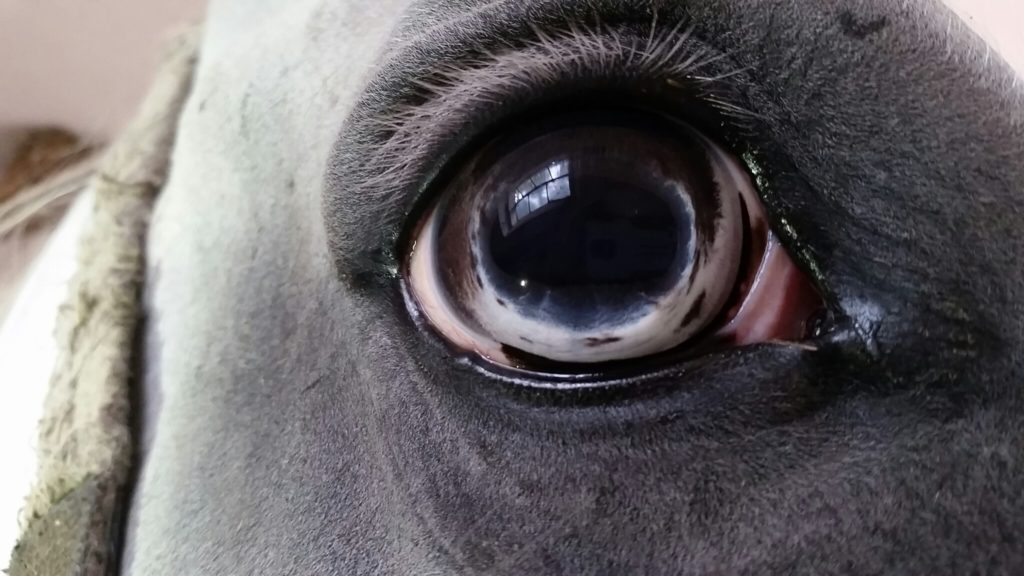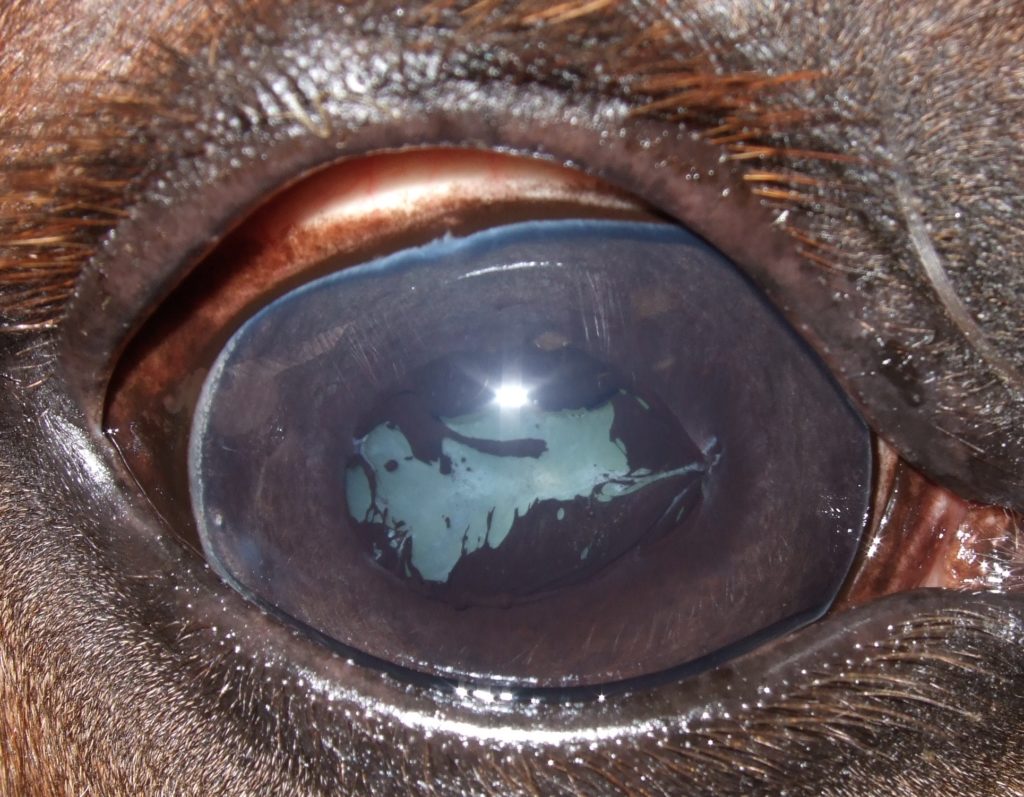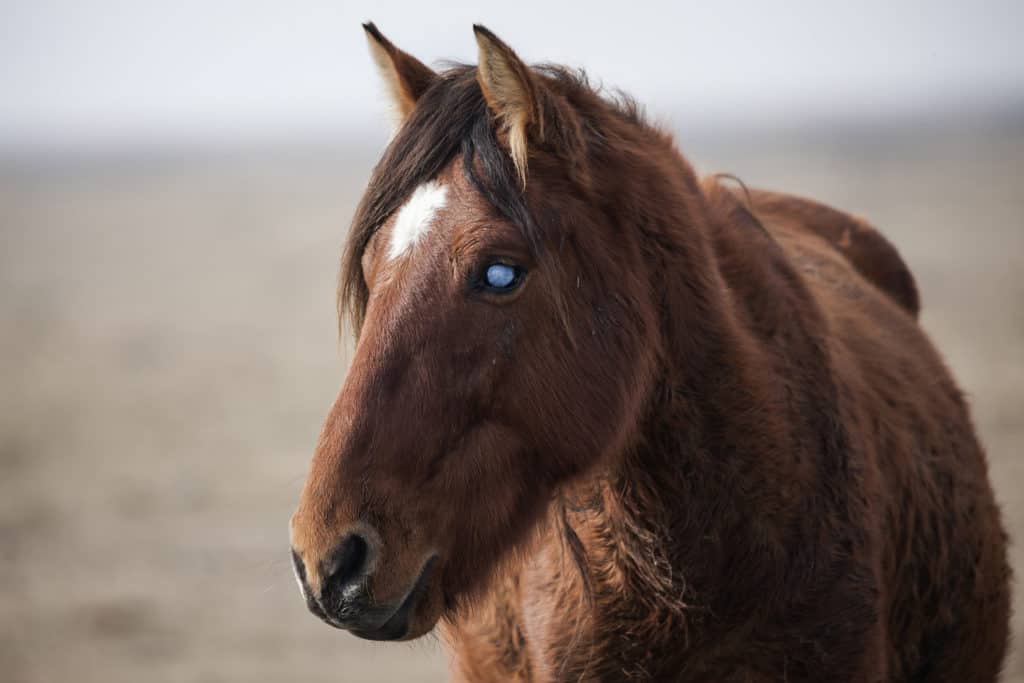
Dealing With Deteriorating Vision in Horses
Find out what behaviors and signs to watch for that suggest visual impairment, and learn how to help horses deal with deteriorating eyesight and blindness.

Find out what behaviors and signs to watch for that suggest visual impairment, and learn how to help horses deal with deteriorating eyesight and blindness.

Here’s how to manage senior horses’ aging teeth, joints, lungs, and more.

Horses of some breeds with limited gene pools are at risk of developing health issues due to inbreeding. But researchers found that this isn’t the case when it comes to eye problems in a 400-year-old Czech breed, researchers say.

Researchers found that the only factor associated with a decreased risk of squamous cell carcinoma (or SCC, the most common ocular tumor in horses) recurrence was use of a fly mask with 90% or more UV light protection.

Belgian horses with two copies of the DDB2 genetic variant are four times more likely to develop ocular squamous cell carcinoma (SCC) than those with one or no copies, researchers found.

When riding your horse in the woods or the wilderness, things can go wrong–and usually when least expected. Here are some possible predicaments you might face while out on the trail.

Here are four crucial areas to include in your horse grooming routine.

Dr. Liz Arbittier encourages owners and caretakers of senior horses to call their vet if they notice any changes in health or behavior, even when it seems minor, to identify issues and begin treatment early. Here’s what to watch for.

Periocular habronemiasis appears as granulous lesions around the eye as a result of parasite infestations. While it was once more common in tropical and subtropical climates, veterinarians have begun diagnosing it in regions as far north as Europe and the United States.

An OTTB who’s been off the track for three months tilts her head during bridling and at liberty. Could she be in pain? An internal medicine specialist weighs in.

To boot, researchers found that it’s not always easy for owners to spot ocular issues: Owners reported that fewer than 4% of the study horses had some sort of ocular disease, but researchers determined that nearly 90% of them did.

Equine recurrent uveitis (ERU) is an incurable and painful eye condition that can result in vision loss and reduce affected horses’ function and value. Here’s a look at the latest research and findings on this frustrating condition.

Skin problems were the most common general disease reported (33% of all syndromes recorded) and nonhoof-related lower limb lameness was the most common individual issue reported (18.5% of all syndromes recorded).

Scientists recently reported on cases of parasitic worms living in Korean horses’ eyes, triggering immune responses that lead to a cloudy cornea and ultimately total–but reversible– blindness.

A number of things—some benign, some serious—can cause a cloudy eye. Here’s what you need to know.

Critical conditions such as colic, injuries, and dehydration can strike when you’re at a competition with your horse. Here’s how to handle them.
Stay on top of the most recent Horse Health news with
"*" indicates required fields